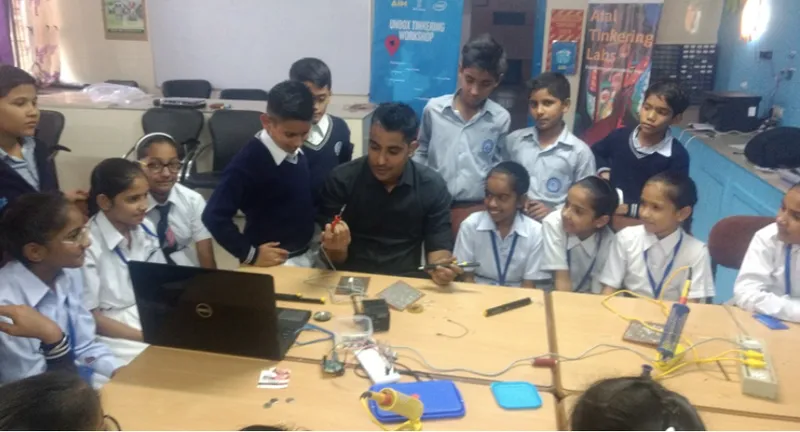Good Governance: Developing a mindset for learning through tinkering
Learning is catalysed by introducing an engaging, meaningful and actionable activity, which is experienced in the real world, says Ronak Jogeshwar, Innovation & Operations Lead for the Atal Tinkering Labs Program
During the long and rich history of pedagogy, humans have developed numerous learning theories and methodologies. For the majority part of our existence, learning has been merely an aspect of one’s conditioning towards acceptable social behaviour. During the Renaissance, learning evolved from this narrow approach to a complete process of cognitive enablement of humans by tapping into their memory.
These approaches leverage the fact that knowledge is delivered to the learner.
However, I advocate the ‘Constructivism’ approach – a well-established theory of learning, which indicates that people actively construct new knowledge by combining their practical experiences with what they already know. Its premise is that all learning is personal, always.

Children should be allowed to empathise, ideate, experiment, take risks and prototype
image: Atal Innovation Mission
I do believe that this learning theory most strongly resonates with ‘Tinkering’, and is thought-provoking to anyone who wishes and intends to impart project-based learning within their classrooms.
And why do I say that? Because, the ‘Making’ and ‘Tinkering’ movement in the education domain revolves around the Joy of Making. Although learning happens inside a learner’s mind, the process is catalysed by introducing an engaging, meaningful and actionable activity, which is experienced in the real world. This makes learning hands-on, shareable, memorable and joyful.
Innovators start their journey embracing the joyful process, which then is supplemented by a problem statement in or around themselves. The problem statement may be identified by the innovator or may be introduced to them, and it nudges the innovator towards the Design Thinking Process. This is the beginning of a virtuous circle, snowballing and creating more and more enquiries within the Innovator and the people around them.
To our young students, this experience is nothing but uplifting. When we allow children to empathise, ideate, experiment, take risks and prototype, we give them permission to trust themselves. With the element of tinkering, they evolve from an imaginative young child to someone who can transform their ideas into reality. In the conventional education model, different subjects have different but set objectives of learning.
Science is analytical, math is logical, art is creative, due to this, some get hardwired in their approach to solve problems. Breaking this notion is important and adopting a tinkering mindset in a school environment allows all students to learn in their own style.
Not all classrooms or labs in schools can completely cater to a tinkering approach, which necessitates the existence of a Tinkering Lab or a Makerspace in schools. Tinkering, when presented as a way to approach problems in an iterative fashion, can take its rightful place in schools next to the analytical approaches to problem-solving. The 21st-century educators and pedagogy designers are aware of this opportunity and are working relentlessly in different parts of the world.
One such approach in India is the Atal Tinkering Lab Program, which in its essence, advocates learning-by-doing. Housed at Government of India’s policy think tank NITI Aayog, Atal Innovation Mission’s mandate is to foster curiosity, innovation and entrepreneurship within the youth of the country – the demographic dividend.
This tinkering movement may represent India’s hope for reigniting progressive education. And I hope that this becomes one of the many inspirations for our young innovators, creators, entrepreneurs, teachers and future educators.
If I could travel back in time, I would go back with celebration and not regret, telling my younger self that ‘you are not alone’. In the past four years as a programme manager and pedagogy strategist, I have stumbled upon innumerable people and stories that inspire me, every day.
Edited by Diya Koshy George







